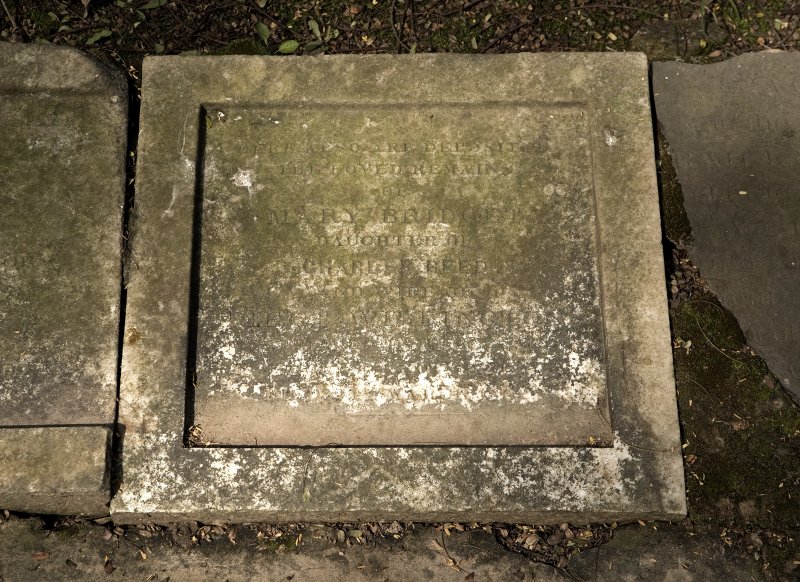Charles Reed was a prominent member of Calcutta society and although his estates were the subject of litigation, his will declares their value as 2 lakh (200000) sicca rupees. Reed was the son of a civil servant, Peter Reed and an Indian woman. Peter Reed is well-known as the co-founder of the India Gazette together with Bernard Messink. The India Gazette was the rival journal to Hicky's Bengal Gazette. Charles Reed's name emerges prominently in a Supreme Court ruling against him where in the case Byjnauth Singh vs. Charles Reed, Reed is not accorded the rights of a British citizen as his mother was Indian.
Charles Reed, was a Eurasian merchant who famously wrote tracts against capital punishment directed at the practices of the East India Company. A collection of his letters, entitled Two Applications to the Sudder Deewanee and Nizamut Adaluts, Made for the Purpose of Having Due Moral Instruction Afforded to Prisoners, and to have Capital Punishments Abolished, was printed and circulated in Calcutta in 1833 and 1838. According to James Gregory, Reed strongly believed in the unchristian nature of capital punishment, having been influenced by Beccaria in his childhood. For more, see Gregory's Victorians Against the Gallows: Capital Punishment and the Abolitionist Movement in Nineteenth Century Britain (London: I.B.Tauris & Co Ltd, 2012).
In 1811, he introduced a case in the Supreme Court at Calcutta against the previous and present Governors-General Wellesley and Minto, numerous Council members, high officials of the Company and three Judges of of the Sudder Diwani Adawlut, charging them with "oppression, tyranny and neglect of duty". Reed spent 20,000 Rupees of his own money in collecting evidence and preparing the case for trial, and wanted the Supreme Court of India to refer the cases that were allegedly misjudged by the Sudder Diwani Courts to the lower Courts of England. The Supreme Court ruled that there is a law that guarantees the immunity of all members of the Company's government from the jurisdiction of the Courts except in cases of felony. The Judges further said that to qualify under the Act, the offending civil servant must be proved to have acted under orders of the government, and there was insubstantial evidence of this in Reed's case. Finally, Reed argued that no one would provide security for his action against the Company for fear of being disadvantaged in their residence in India, but the Judges dismissed this as slanderous. See: http://www.houghton.idv.hk/?p=174 entry of Saturday, 23rd February, 1811.
Charles Reed is mentioned again in the Calcutta Annual Register (1821) and the Asiatic Journal Volume 13 (February 1822) as the plaintiff in a case versus Byjuant Singh argued before the Supreme Court on appeal from the Provincial Court of Moorshedabad. Represented by Mr. Fergusson and Mr. Compton, Reed pleaded to be entitled to the rights and privileges of a British subject. After a reply from the King's Advocate General, the Court judged that "in this country, a person whose father is a British subject, but born, not in lawful wedlock, of a woman who is not a British subject, is, according to the uniform practice of the Courts, and the evident intention of the statutes that represent India, not considered as a British subject." Reed is understood to have referred the case to the English courts on being advised by the Bench to recommend the case to the Legislature by petition.
Joseph Reed (27.08.1741 - 5.03.1785) is mentioned on Charles Reed's tombstone as a relative "famous in the history of history of American Independence". He ran a law practice in Philadelphia before joining the Continental Army as colonel, eventually serving as secretary and aide-de-camp to George Washington. He is known for suggesting that the First Navy Flag bear the design of the Evergreen Tree of Liberty. He was elected to Congress in 1778 and, on 1st December 1778, President of the Supreme Executive Council of Pennsylvania, the equivalent of the position of Governor. He was re-elected twice, and during his tenure Pennsylvania passed a law for the gradual abolition of slavery (1780). See: http://bioguide.congress.gov/scripts/biodisplay.pl?index=R000123)
Notes
Reed published a pamphlet Two Applications to the Sudder Diwanee and Nizamut Adaluts, Made for the Purpose of Having Due Moral Instruction Afforded to Prisoners, and to Have Capital Punishments Abolished comprising his letters to the Sudder Diwani and Nizamat courts regarding the abolition of capital punishment. This book is available here: http://tinyurl.com/oojfh95.
The tablet on Charles Reed's tomb has been relocated to the South Park Street Cemetery.

Shalmi Barman and Souvik Mukherjee

